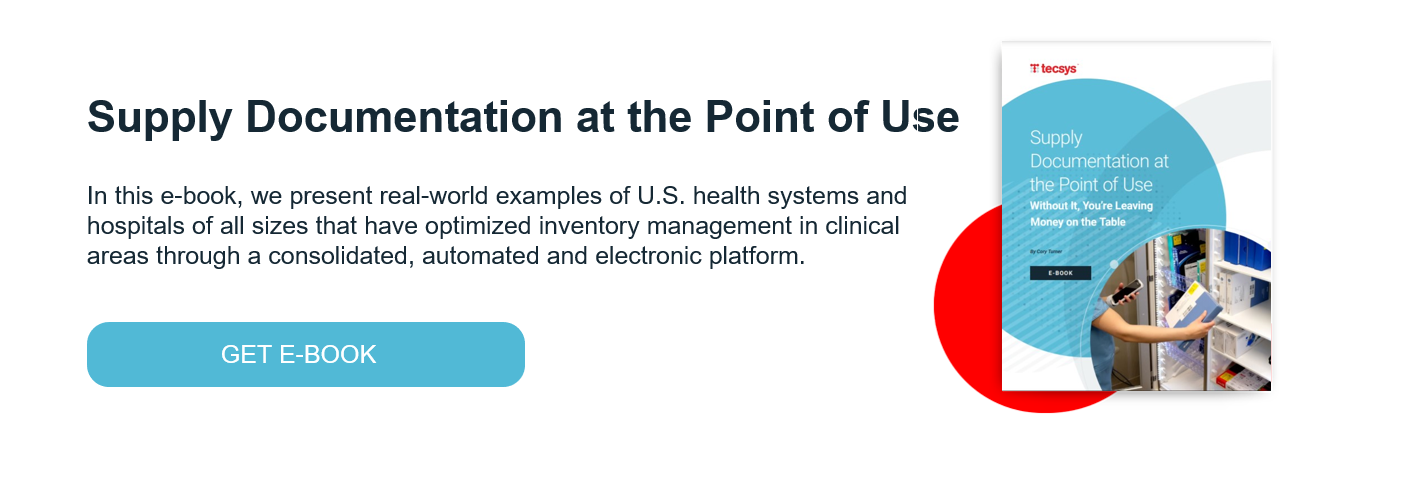Breaking Down the Supply Chain/Clinical Divide Through Common Goals

This article was originally published on Healthcare Business Today.
Health systems and hospitals want to improve patient care, but most can’t survive in today’s value-based care environment unless they find ways to reduce expenses. While the C-Suite and supply chain leadership feel the financial pressures every day, they often finding it challenging to convince clinicians to change products and practices.
Improving care quality and reducing costs don’t have to be opposing goals. An increasing number of healthcare organizations are successfully achieving both through the establishment of clinically integrated supply chains (CISC).
The Association for Health Care Resource & Materials Management (AHRMM) describes a CISC as one that delivers “patient care with the highest value (high quality, best outcomes, and minimal waste at the lowest cost of care).” In this model, clinical, supply chain and finance leaders come together to share information and make collaborative and informed product decisions that impact product costs, care quality and financial outcomes (CQO) simultaneously.
As healthcare organizations work to integrate clinical and business operations, they are encountering significant roadblocks posed by legacy practices, systems and processes. Because supply chain has traditionally been seen as a support system to clinicians rather than a strategic partner, these two functions have long operated in separate silos.
Here are four key steps to breaking down barriers and uniting clinicians and supply chain teams on the path toward greater value.
1. Foster a culture of collaboration
Because many clinicians still believe supply chain’s primary goal is to cut costs by procuring the least expensive products with little consideration for patient impacts, they can be skeptical at any efforts focused on collaboration with the supply chain function.
While the cultural barrier exists throughout most procedural areas, including the nursing units, the wall gets even thicker in specialty departments (e.g., perioperative, Cath Lab, IR Lab) where clinicians have traditionally controlled supply procurement and management outside of main supply chain systems (e.g., ERP) and channels.
Those supply chain leaders that have successfully fostered collaboration with clinical stakeholders have started by engaging clinical champions to break through cultural/communication barriers.
Identify a clinical leader with supply chain knowledge and recognition of the value that supply chain insights bring to informed product decisions. Ask this individual to help build supply chain’s trust among the clinical team, starting small perhaps with monthly meetings to introduce the CISC concept and examples of how other organizations have leveraged it to achieve positive patient care impacts.
2. Gain a holistic view
Clinical/supply chain collaboration is often hindered by the inability of supply chain to gain visibility into inventory outside of the enterprise resource planning (ERP) system. Supplies in specialty areas, managed within standalone systems that lack integration to the ERP, represent the costliest items and those that require the closest tracking and most detailed documentation (e.g., implants).
Supply chain leaders need access to data on these supplies to have educated discussions with clinicians on their clinical and cost impacts. To gain visibility and insights, they need a holistic supply chain management (SCM) solution that covers the full scope of supplies and tracks their movement from the time they arrive from a manufacturer or distributor to the time they are consumed at the patient bedside.
3. Offer actionable data
It is often said that clinicians are data driven. To even consider a change in product, they require concrete evidence that the change will deliver benefits that outweigh the challenges of the switch (e.g., staff education and training, workflow impacts, etc.).
Supply chain needs access to data on the impact of current product usage on cost, quality and outcomes (CQO) when approaching clinicians with a potential CISC initiative. This can only be achieved through the integration of supply chain, clinical and financial data.
A SCM platform that is fully integrated with clinical (e.g., EHR) and financial systems (e.g., billing, charge master) and is either integrated with clinical POU systems or has taken the place of these disparate IT solutions, can generate accurate, timely and complete data that supply chain can use to substantiate its claims and secure clinical support for change.
4. Prove your worth
When experiencing resistance from clinicians for collaboration, supply chain teams often must elevate the conversation to the C-suite level to gain executive leadership support. When taking this approach, the supply chain leader should think at a higher level at how supply issues impact patient care delivery and the bottom line.
While lack of visibility to inventory on the surface is a day-to-day operational problem, the broader implications of wasted inventory expense (e.g., lost, expired supplies), missed charge capture, revenue leakage and patient safety risks (e.g., expired/recalled product used on patient) are more likely to catch the interest of the hospital CEO, CFO or CMO.
If the organization’s supply chain is still in the early stage of the supply chain technology maturity curve and is unable to generate reliable analytics on its own supply usage, there are many industry resources and examples it can leverage to secure C-suite interest and demonstrate the value of supply chain technology investments. There are countless success stories of health systems and hospitals of all sizes saving anywhere between $150k to $20M through greater inventory visibility and control.
Transformation from dock to doc
Improving the triad of supply costs, patient care quality and overall financial outcomes requires interdepartmental collaboration, information sharing and decision making among supply chain, clinicians and other key stakeholders (e.g., finance, value analysis).
Given the historic challenges in this area, including lack of trust, legacy systems and silos of data, establishment of a CISC can seem overwhelming to a health system or hospital. Healthcare supply chain leaders can start with small steps today to engage clinicians, initiate conversations and begin paving a path forward for impactful change.




